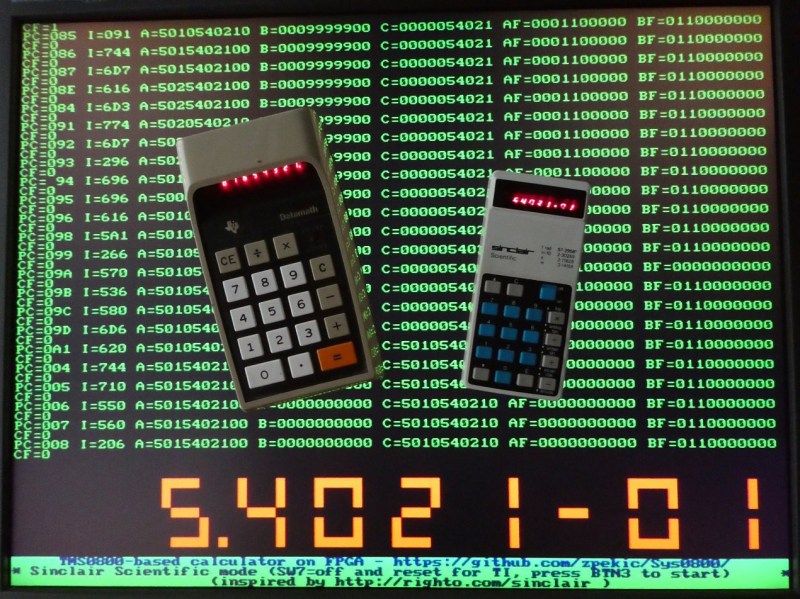The FPGA revolution that occurred within the past few decades was a boon to many people interested in “antique” electronics. The devices “wire together” logic elements as needed rather than emulating chips completely in a software layer, which makes them uniquely suited for replicating chips that are rare, no longer in production, damaged, or otherwise lost. They also make it easy to experiment with hardware, like this project which combines two antique calculators into one single unit.
The two calculators used in this combination device are the TI Datamath and the Sinclair Scientific, both released in the early 1970s, the former of which has been extensively documented and reverse engineered on at least one occasion. The reproduction from [zpekic] has a toggle that allows the user to switch between the two “modes”. This showcases the power of microprogramming and microcode, and of the FPGA platform itself. Although both modes are functional, there are still a few bugs resulting from how different the two pieces of hardware were, which is really more of an interesting facet of this project than anything.
The build is a great showcase of FPGA technology, not to mention a great read-through for understanding these two calculators and their fundamental differences in data entry and manipulation, clock cycles, memory, and everything in between. It’s worth checking out, even if you don’t plan on using a decades-old calculator in your day-to-day life.
















Nice idea and good exercise revitalising old classic stuff, was looking for doing this re the HP 41 series C, CV, CX
Sold a few during my engineering days latish 1970’s to get me through still have one left but, the thread on hackaday doesn’t seem to be accepting comments anymore:-
https://hackaday.com/2018/07/04/nonpareil-rpn-hp-41-calculator-build/
Nice project through tech issues, should be easy to address.
Thanks for post, cheers
I didn’t think I used ‘decades-old’ calculators until I realised my daily-use one is from 1984 (and shows it…). I did splash out on a graphing calculator (fx-7500g) in 1988, but it consumed batteries at a rate of knots (iirc ~10h use from 3x CR2032)
Do I use a decades old calculator?
When my HP48G died I was done with school so what is allowed in a testing center was no longer a concern. I just kept the manual and downloaded an emulator. HP is very nice in that they allow this and even offer the ROM as a free download themselves.
True, but something like that HP is in the interface presented.
Decades old? No. Plain calculator? Yes.
Two in one?
Hopefully it will have the keyboard/display for one on one side, and the other keyboard/display on the other side, so the user can just flip it over as needed.
Like an Ace Double?
Yeah,
I googied Ace Double, hoping to find “calculators”, and got links to betting sites.
It took me a moment to realize you meant paperback books!
B^)
Sorry.
I have one of the Sinclair Scientific calculators in my little calculator museum. I’d love to get my hands on something like this too.